This document provides an overview of basic Python syntax and data types. It discusses indentation, statements, variables, numbers, strings, lists, tuples, and dictionaries. For each data type, it describes how to define, access, and manipulate objects of that type using various functions and methods. It also provides examples of working with each data type and exercises for hands-on practice. Overall, the document serves as a basic introduction to Python syntax and core data types for new programmers.


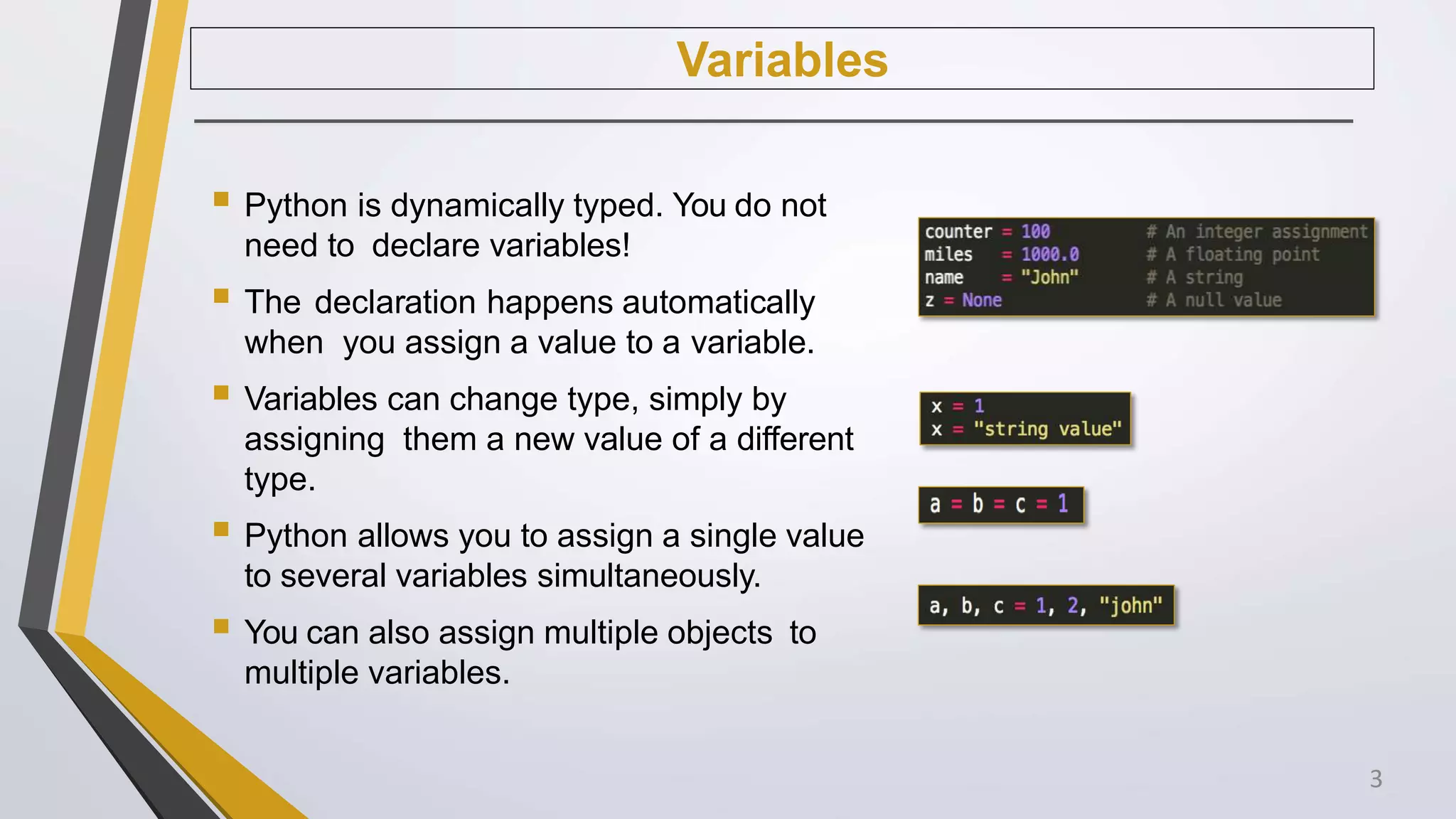

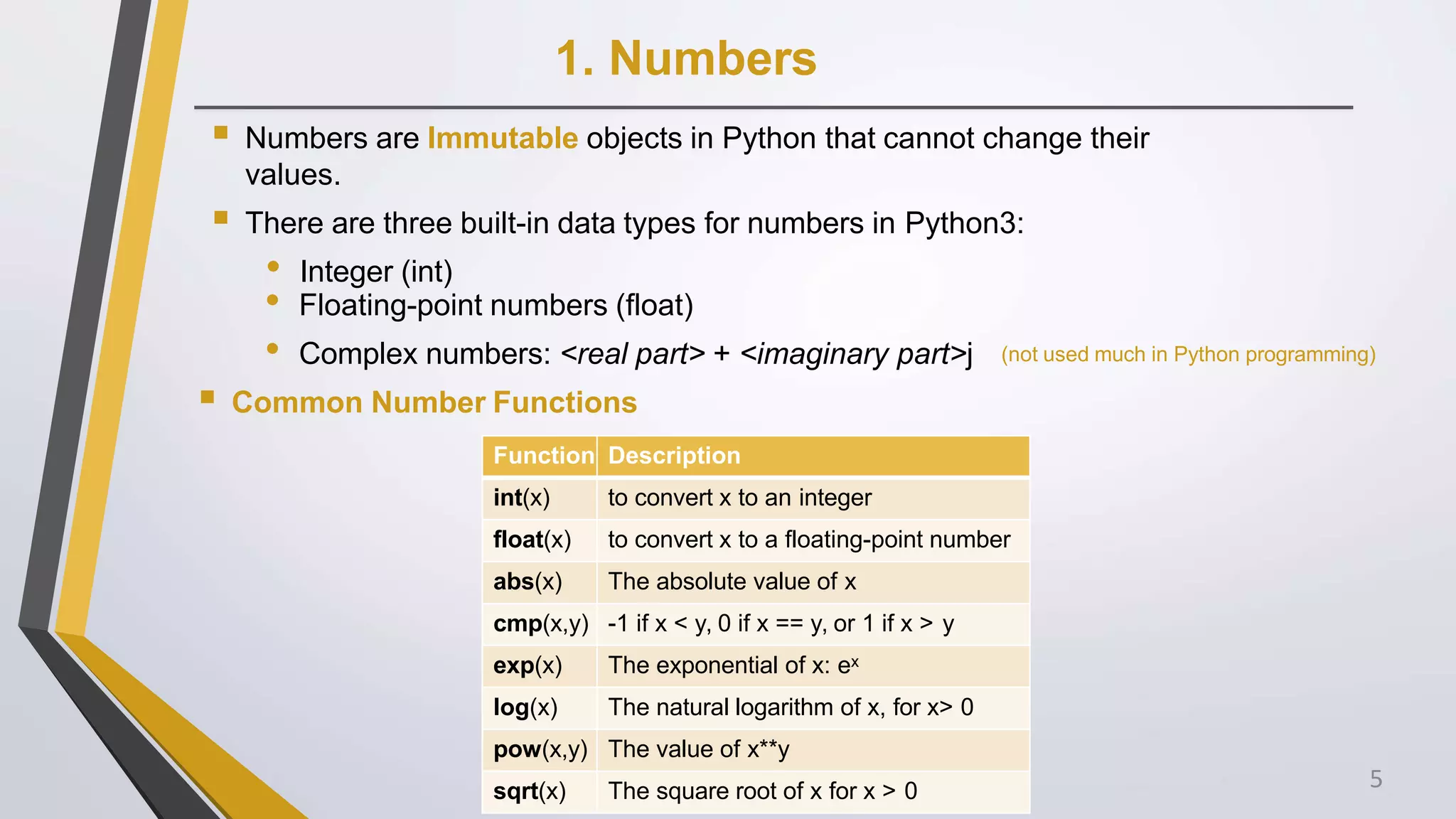
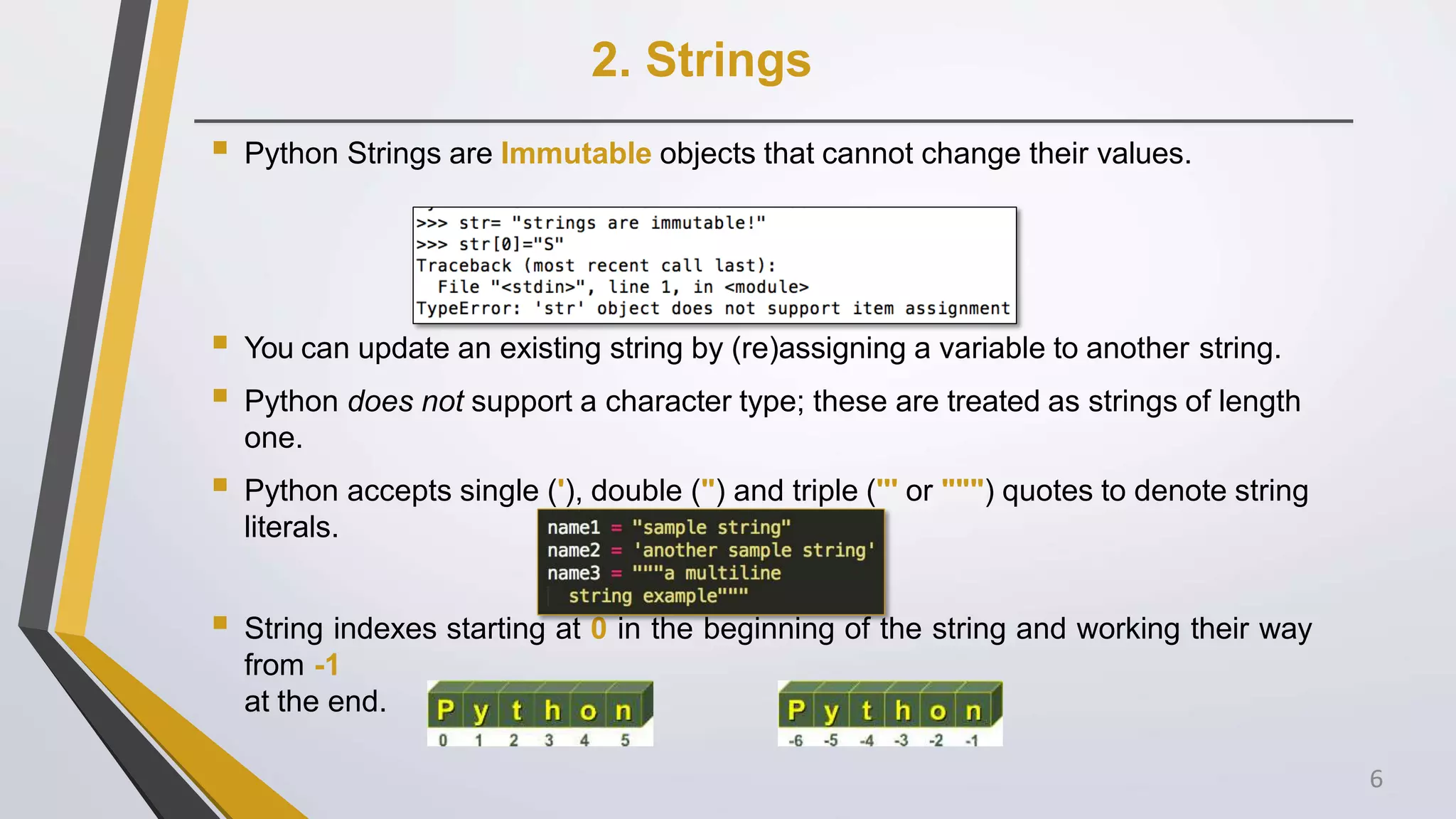
![Strings …
String Formatting
Common String Operators
Assume string variable a holds 'Hello' and variable b holds
'Python’
Operator Description Example
+ Concatenation - Adds values on either side of the operator a + b will give
HelloPython
* Repetition - Creates new strings, concatenating multiple
copies of the same string
a*2 will give HelloHello
[ ] Slice - Gives the character from the given index a[1] will give
e a[-1] will
give o
[ : ] Range Slice - Gives the characters from the given range a[1:4] will give ell
in Membership - Returns true if a character exists in the given
string
‘H’ in a will give True
7](https://image.slidesharecdn.com/chapter-2-230122114007-d12f415b/75/Chapter-2-pptx-7-2048.jpg)
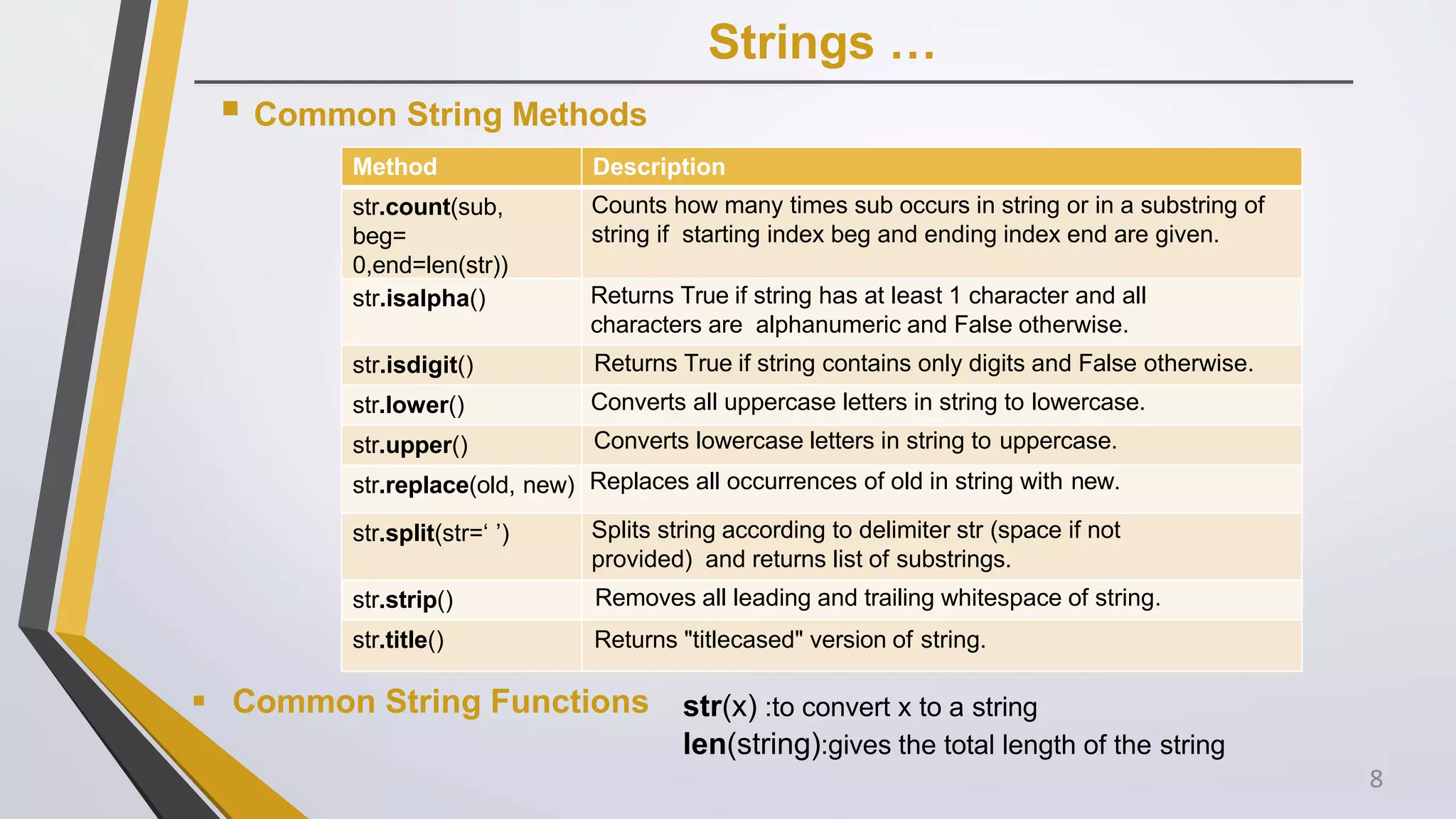

![3. Lists
A list in Python is an ordered group of items or elements, and these list elements don't
have to be of the same type.
Python Lists are mutable objects that can change their values.
A list contains items separated by commas and enclosed within square brackets.
List indexes like strings starting at 0 in the beginning of the list and working their way
from -1 at the end.
Similar to strings, Lists operations include slicing ([ ] and [:]) , concatenation
(+),repetition (*), and membership (in).
This example shows how to access, update and delete list elements:
10](https://image.slidesharecdn.com/chapter-2-230122114007-d12f415b/75/Chapter-2-pptx-10-2048.jpg)
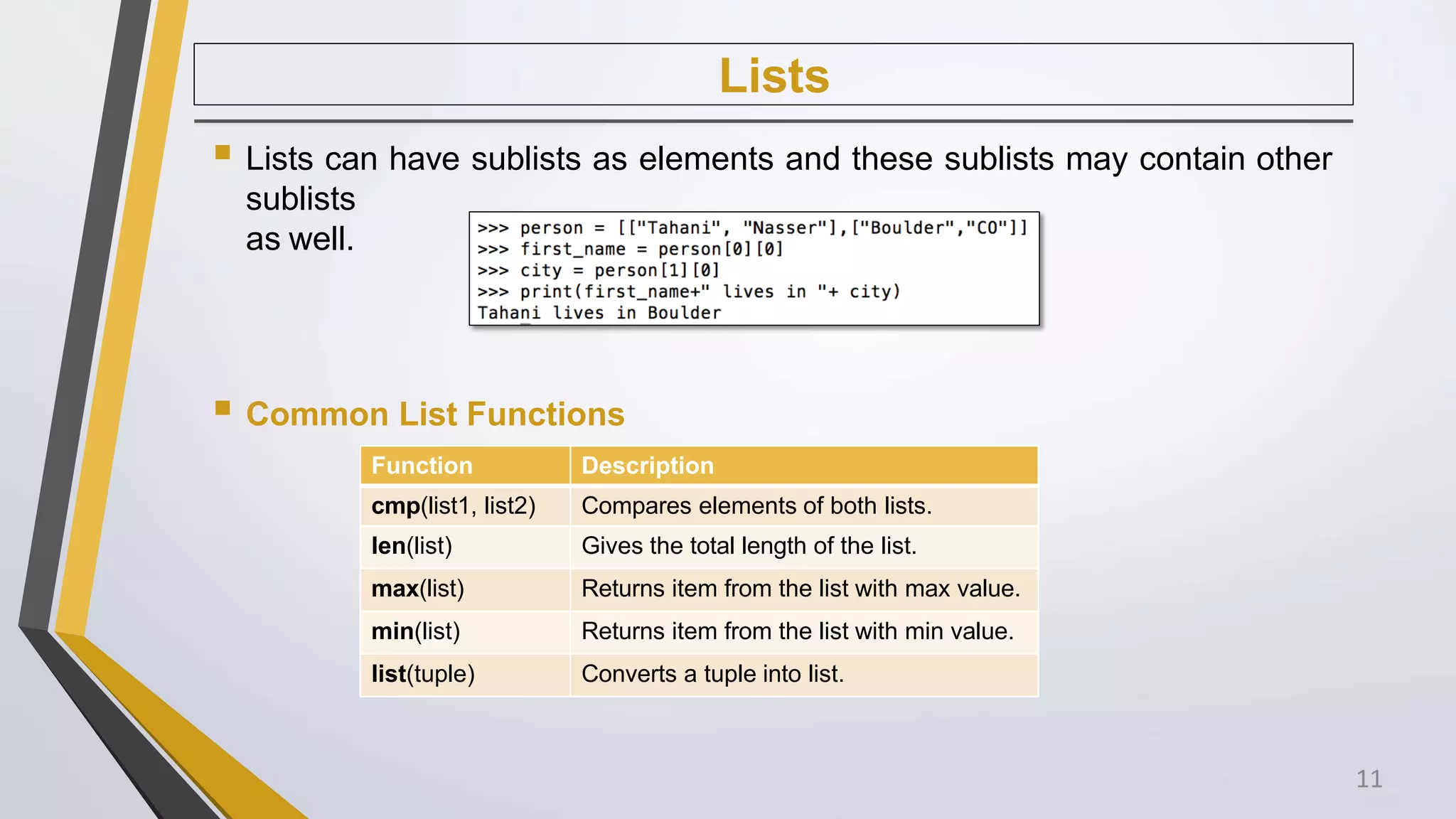

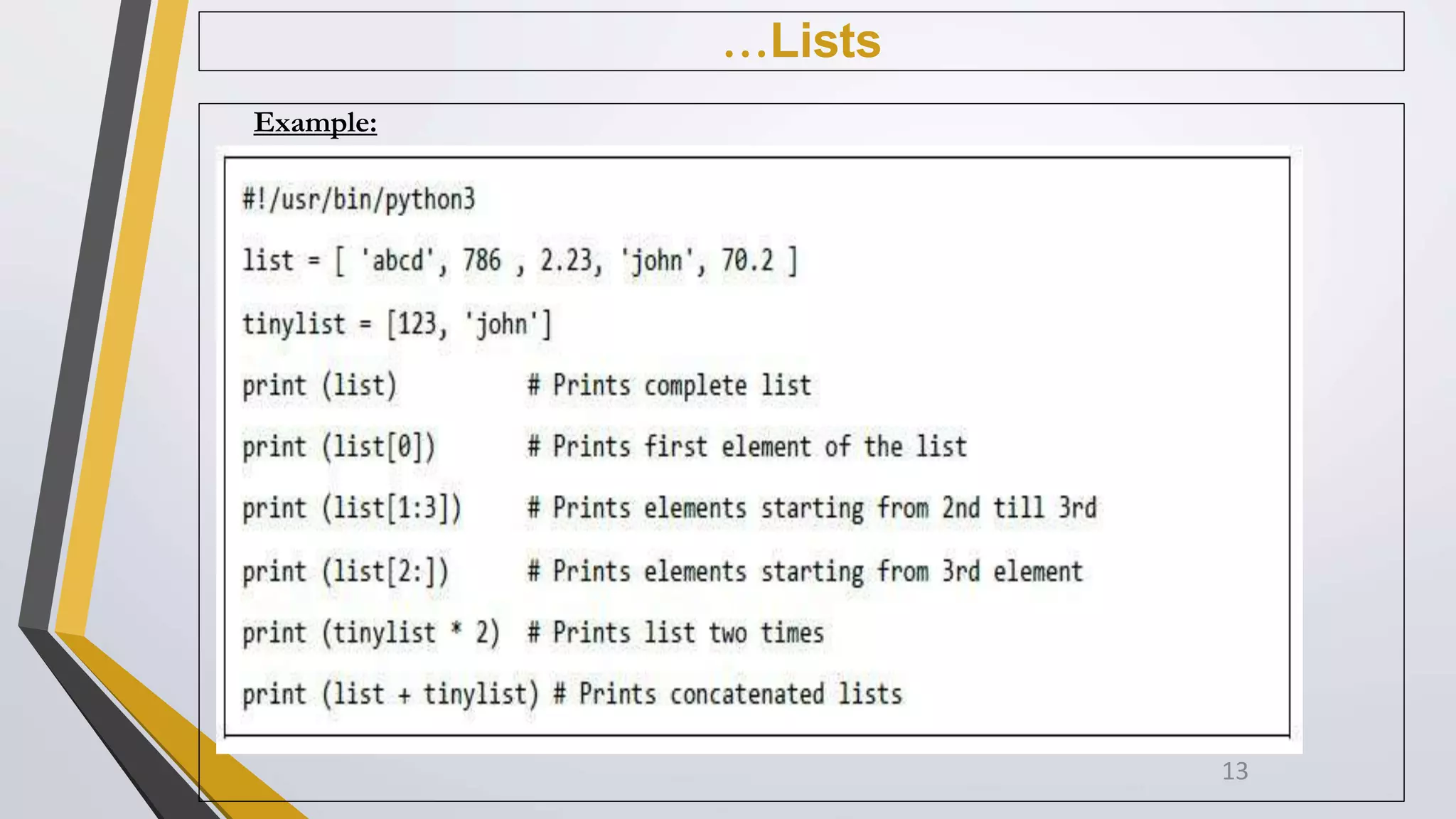

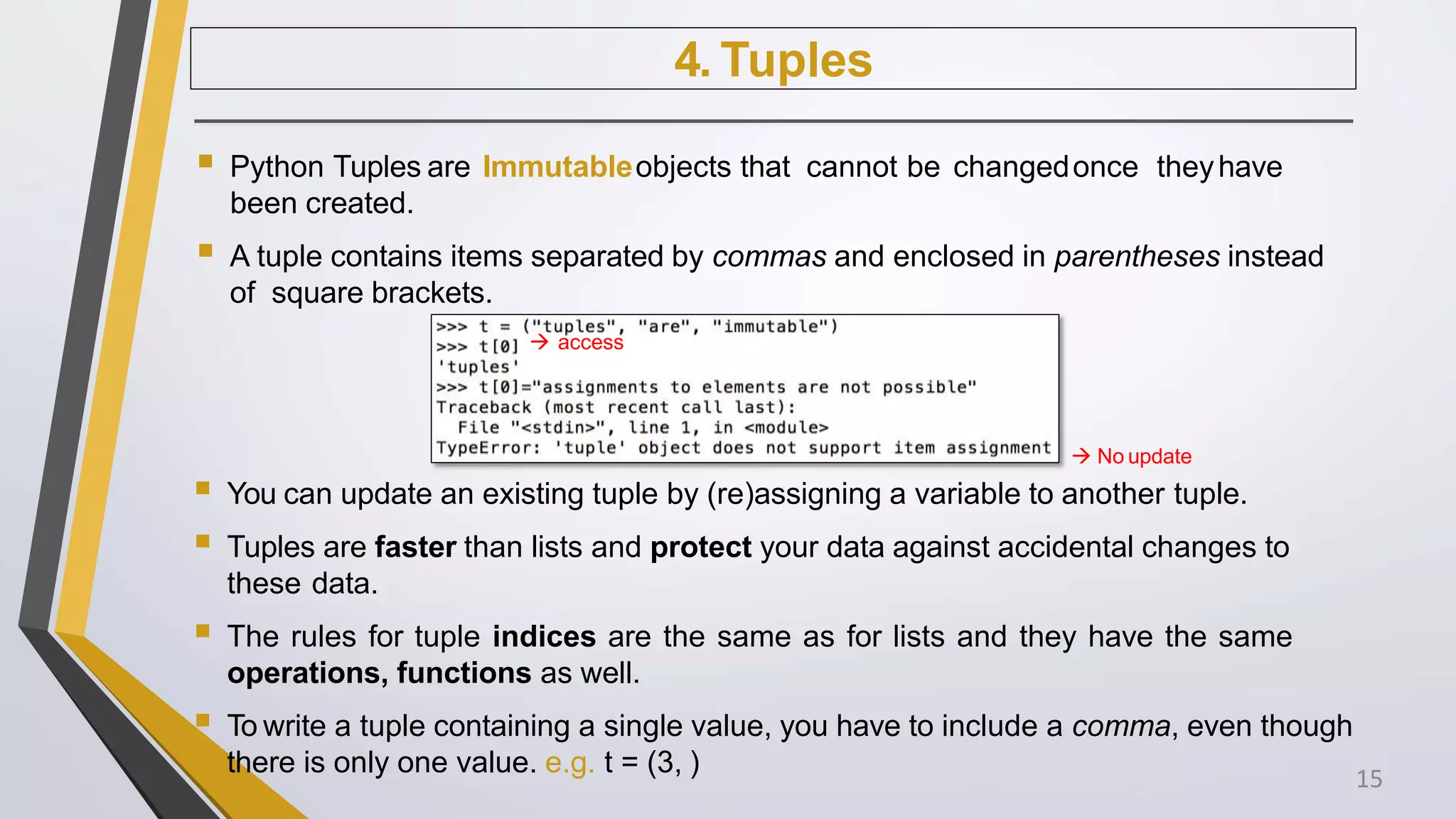
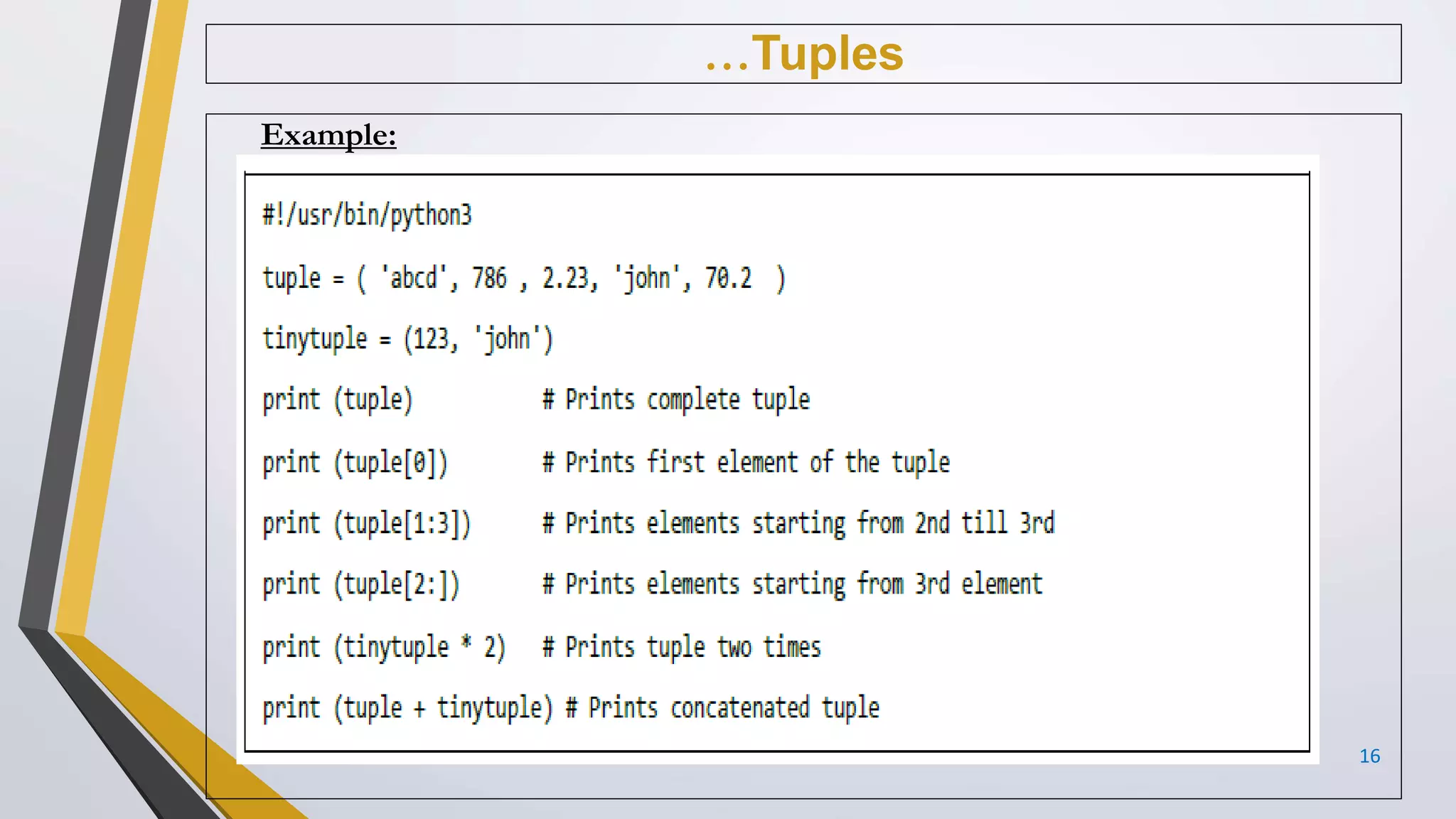
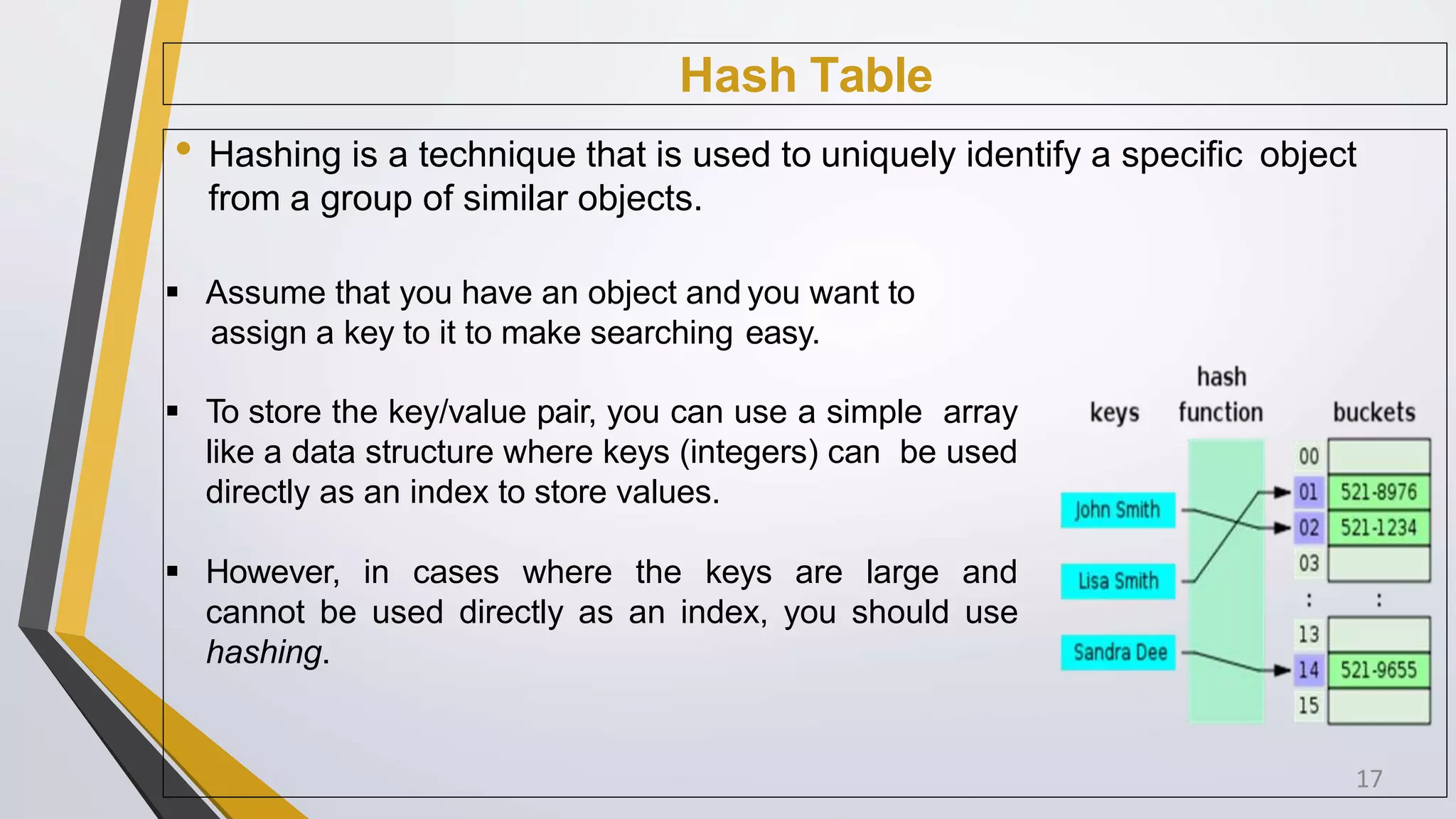
![5. Dictionary
Python's dictionaries are kind of hash table type which consist of key-value pairs
of unordered elements.
• Keys : must be immutable data types ,usually numbers or strings.
• Values : can be any arbitrary Python object.
Python Dictionaries are mutable objects that can change their values.
A dictionary is enclosed by curly braces ({ }), the items are separated by commas, and
each key is separated from its value by a colon (:).
Dictionary’s values can be assigned and accessed using square braces ([]) with a
key to obtain its value.
18](https://image.slidesharecdn.com/chapter-2-230122114007-d12f415b/75/Chapter-2-pptx-18-2048.jpg)
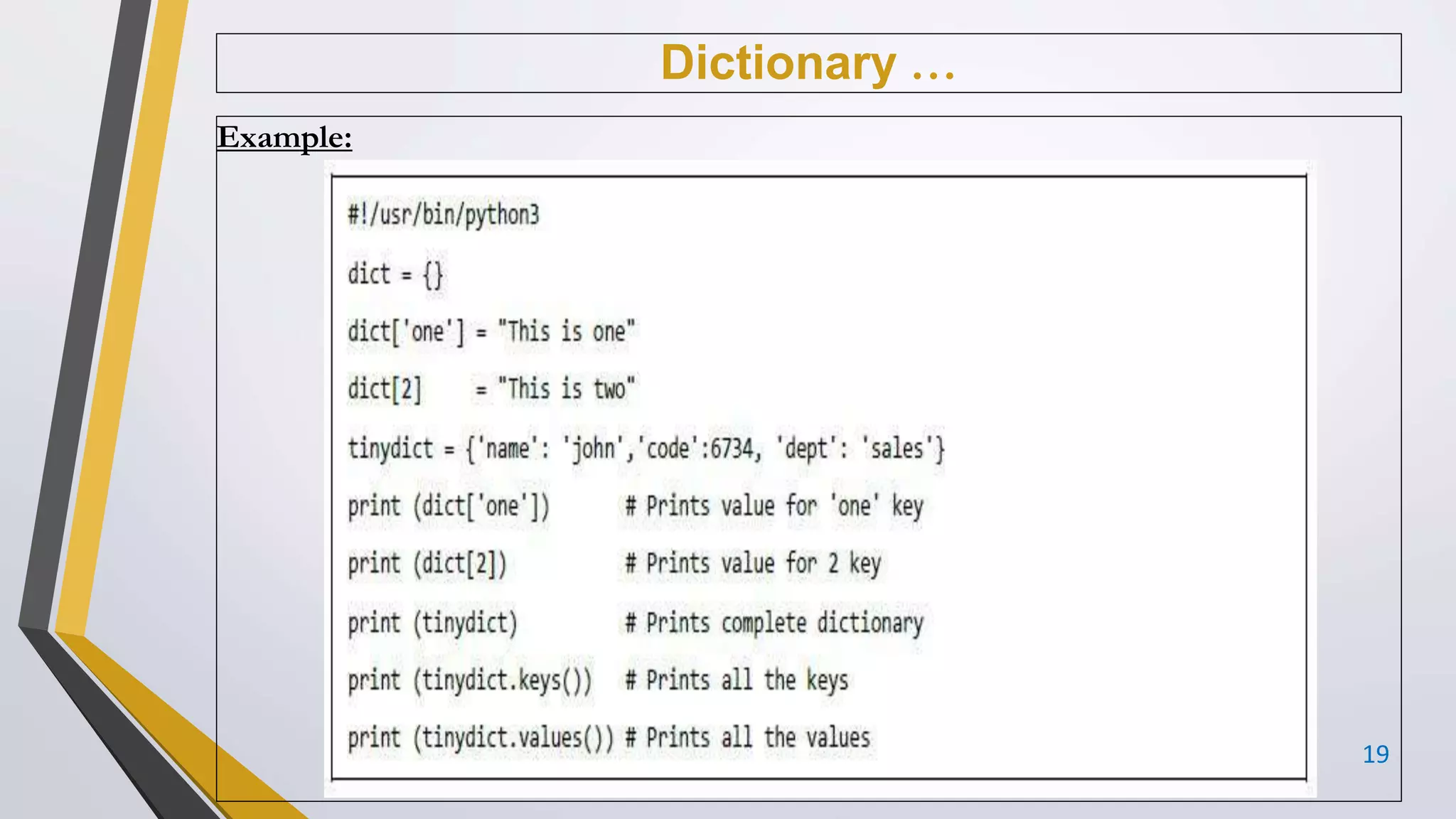
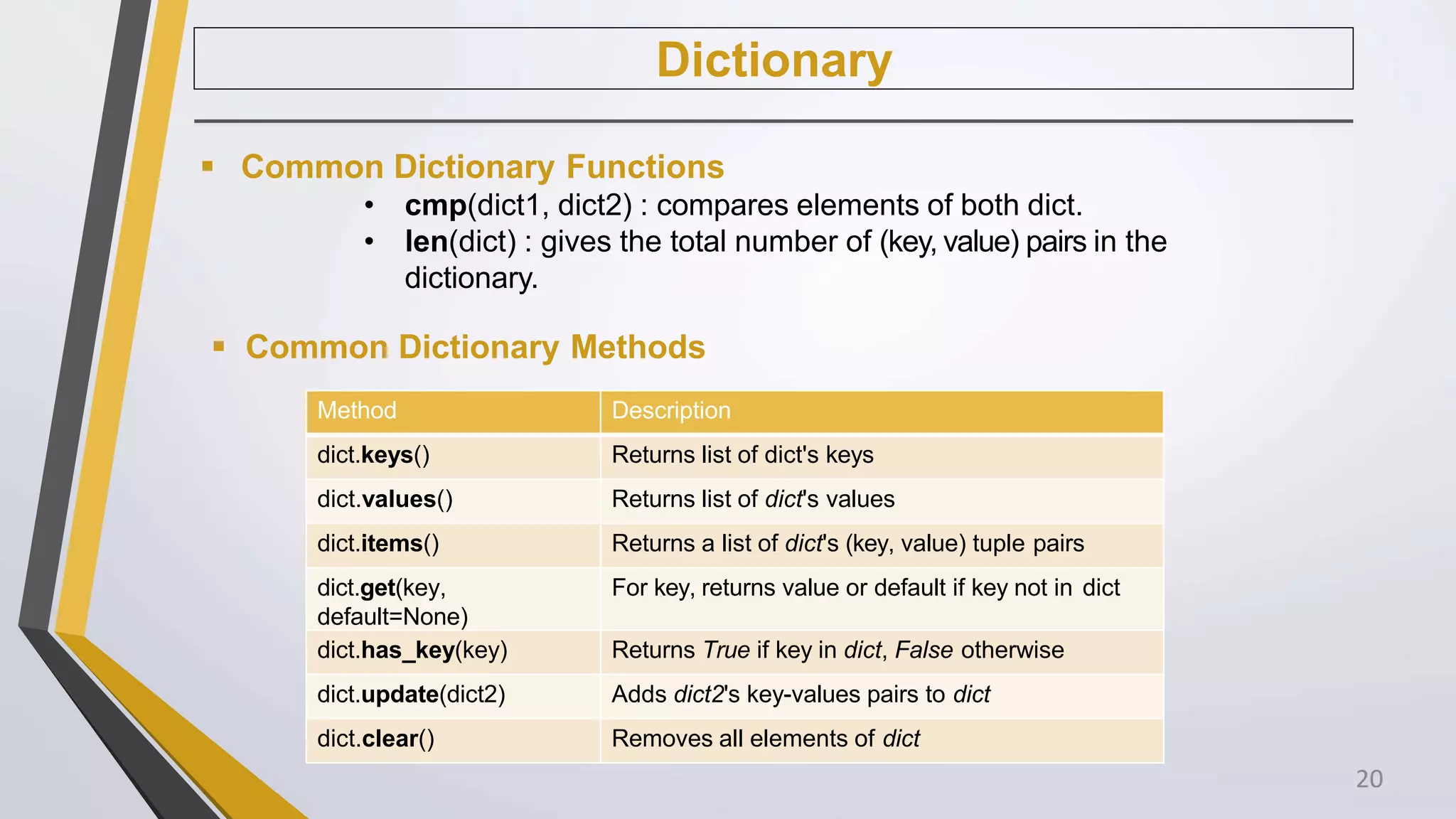
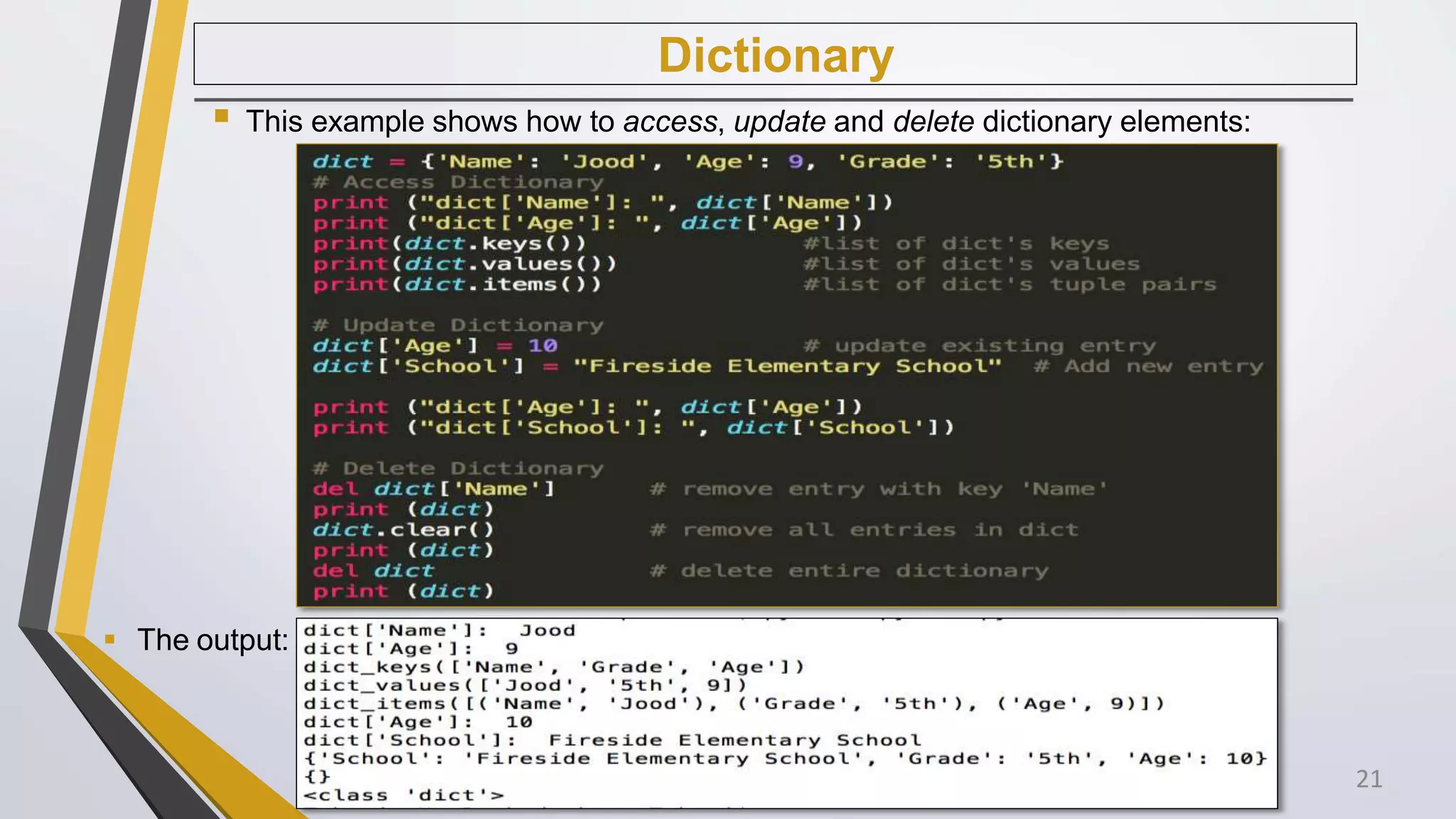
![Exercises
1. Reverse a list in Python
2. Accept any three string from one input()
3. Create a string containing an integer, then convert that string into an actual integer object
using int(). Test that your new object is a number by multiplying it by another number and
displaying the result.
4. Write python program that Count all letters, digits, and special symbols from a given string.
5. Given a list of numbers. write a program to turn every item of a list into its square.
Given:
numbers = [1, 2, 3, 4, 5, 6, 7]
Expected output:
[1, 4, 9, 16, 25, 36, 49]
22](https://image.slidesharecdn.com/chapter-2-230122114007-d12f415b/75/Chapter-2-pptx-22-2048.jpg)